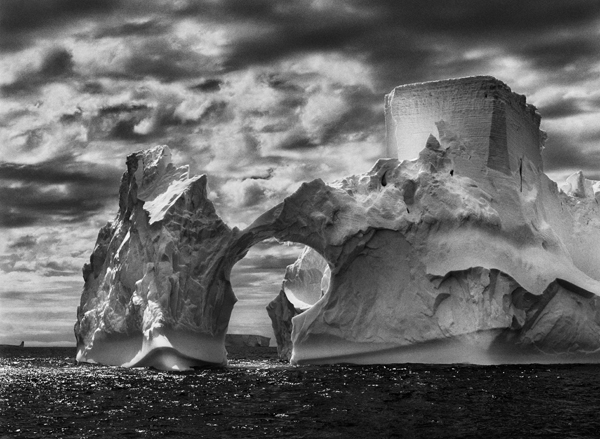
Photo by Sebastião Salgado, as seen in The Salt of the Earth (Sebastião Salgado/Amazonas Images/Sony Pictures Classics)
At times while watching photographer Sebastião Salgado in Wim Wenders’ latest documentary (in collaboration with the subject’s son, Juliano), you wonder how Salgado could take what he saw year after year. For decades, from the 1970s up until the late ’90’s, Salgado made it his mission to see parts of the world where indigenous people resided—from Mexico to the deepest jungles in Africa—and often the focus in his photography was on poverty and repression. He also witnessed widespread starvation in the Sahara, massacres in the Congo, and the giant oil fires in Iraq after the first Gulf War. (One could see similar sights, in a different visual context, in Lessons of Darkness by Werner Herzog, an artist who I’m sure also pursues a similar sense of adventure and anthropological purpose.)
It would have been one thing if Wenders had just focused on the dark side of the photographer’s work. What we see instead is a full portrait of the artist as he eventually comes to be redeemed by the Earth itself. But long before that redemption, we understand this man’s life from his point of view. Salgado mostly narrates the film, and Wenders frames it so that he often appears: His face is superimposed on the photographs he’s looking at through a photographic technique that is very clever, an in-camera trick and not something done in post-production (far as I can tell).
Salgado’s career began not in photography but as an economist, who moved from his family’s farm in Brazil to Paris. After being given a camera and starting out as an amateur, and it being the late ’60’s and early ’70’s, he became more focused on social issues. So, with (and sometimes without) his family, he began traveling to parts of the world to document life that the public had likely forgotten still existed: people living without electricity, in cultures reaching back to thousands of years. In the’70’s, he lived with families, worked, and performed rituals in theses societies. He produced nature photography as well, but this doesn’t fit into the chronology right away. His technique of sneaking up on a group of walruses, as if on a battlefield going against troops, is breathtaking.
Through these images that Salgado shot, which take up roughly 65 to 70 percent of the film (set to haunting music by Laurent Petitgand), we witness this man’s inherent curiosity at how the “other” lives, and much of it is not pretty. No, that’s too cute a word. There are atrocities on display here, of people dying right before Salgado’s lens, in stark black-and-white hues, of those apocalyptic-like oil fields in Iraq, and the traumas of the Congo in Africa. “Our history is a history of war,” Salgado says at one point, and it’s not hard to understand why he has come to that conclusion.
One may think that this sounds like a dry subject for a documentary. Why is this different from a slide show of photographs, one might ask. The power and success of this undertaking is how Wenders simply photographs this man (Salgado has deep wells of emotion under his tough exterior), and how it’s really about Salgado’s quest to rediscover what is good about our planet, such as the oxygen-producing rainforest (when it regrows, as eventually happens on his own farm after a decade-long attempt to bring it back to life). He also reconnects with his family in his later years, though I would have liked to have seen more of his relationship with his wife, who was the first person he ever photographed.
In his way, Salgado is a kind of warrior, at least in Wender’s point of view. “He reacts using his weapon of choice,” Wenders comments at one point. This biographical film is an uncompromising look at the world, but also a wonderful exploration of the transformative power of seeing it through another medium. Indeed, it’s only surprising Herzog, a fellow courageous explorer of the world, didn’t get to this subject before Wenders.
















Leave A Comment